
From Pralaya to a new dawn
- Dr. Sehdev Kumar
Pics: Mansa Photography
December 27, 2016
The epic Mahabharata is an immense ocean for the rich fecundity of the
human condition. For time immemorial, playwrights, poets, artists,
dancers, novelists and visionaries have dived in it to draw inspiration,
or discover yet another insight into what defines the human journey, in
all its trials and tribulations.
It is thus that in her new dance creation Pralaya, Indian/Canadian
Bharatanatyam dancer and choreographer Lata Pada seeks to grasp the ever
present anguish and suffering in the world by diving deep in the ocean
that is Mahabharata. As a consummate artist, with life experiences in
many countries and of many cultures, Pada knows all too well that
despite many shifts in our lives, suffering – physical, emotional,
spiritual – persists as an abiding and corroding existential presence.
It is thus that she is drawn to this perennial theme with certain new
re-visions and new insights.
Pralaya is of course the apocalypse, the falling apart of the order and
the harmony of the universe, and, in one way or another, of all of us
who make that universe. Pralaya is cosmic despair, a profound sense of
hopelessness, when nothing seems to hold together, and there is chaos
all around. As a distinguished dancer and choreographer, Pada has
created an admirable place for herself and for the rich Indian dances
through her award-winning company in Canada, Sampradaya Dance Creations,
where for over two and a half decades now she has trained hundreds of
young dancers and has created many dance compositions over the years. It
is through the efforts of such dedicated and accomplished artists that
increasingly there is a distinct and valuable place for Indian dances,
and their rich and varied traditions, in the multicultural mosaic that
is Canada.
Slide show

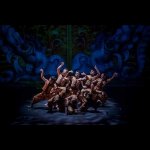

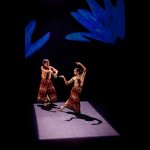


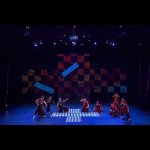
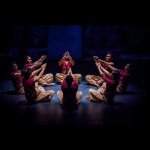
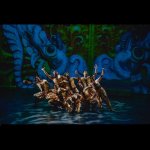
Pralaya is a Canadian work of art, created by Sampradaya Dance
Creations, and funded and supported by several arts organizations in the
country: Canada Council for the Arts, Ontario Arts Council, the City of
Mississauga, as well as by a number of private foundations. All arts --
dance, poetry, music, art – are meant to touch what is universal in all
of us. Pralaya proves yet once again how geographical and political
boundaries just melt away when an artist dares to probe what is the true
essence of life.
With Pada’s concept and vision, Pralaya is an international
collaboration between Canada and Bali, with eight dancers drawn from
both places, all highly trained in classical dance traditions, and yet
working together collaboratively to create something new and haunting.
With her own experience of living in Indonesia for almost a decade, and
absorbing the music, dances and languages of the country, for this work,
Pada has collaborated with distinguished Balinese choreographer Dr.
Wayan Dibia, master of Balinese dance and Topeng mask dance. As
narrators and performers, both Pada and Dibia, tell one of the most
transforming events in the Mahabharata: the Game of Dice. In this game,
possessed by uncontrollable passion for gambling, the great and virtuous
Yudhistira loses it all to the cunning Duryodhan. And then unleash the
war of words, anger, avarice, lust, devastation, apocalypse,
Pralaya.
In its premier performance at Fleck Theatre in Toronto on November 11
and 12, 2016, as part of NextSteps Series at Harbourfront Centre, all
this, and much more, is revealed in this multi-disciplinary dance
production with consummate skill and imagination by accomplished
Balinese and Indian/Canadian dancers, to the music composition of
Praveen D. Rao, featuring master musicians from Bali and India. Over the
next two weeks, Pralaya travelled to nine cities across Canada,
bringing the ancient and eternal stories of India to far off communities
and cities of Canada. For Lata Pada, Pralaya is a deep personal
reflection on the destructive forces that keep pushing us into the
dungeons of darkness, and how, in order to counter such darkness, light
must shine through every crevice of our being.
A contemporary dance-drama lends itself to imaginative inputs from many
other collaborators: Here, Jacques Collin’s visual projections create a
historicity to what may be mythic. Sandhya Raman, a Delhi-based costume
designer, uses Balinese ikat and contemporary motifs, masks and shadow
leather puppets with exquisite dexterity. And above all, a mesmerising
choreographic synthesis of Bharatanatyam and traditional Balinese
dances, to narrate a story from the Mahabharata that has captivated not
only India but also Bali for millennia.
Great conflicts and destructions between members of the same extended
family that are central to the story of Mahabharata and to its special
place in the world literature have been, and in many ways continue to
be, part of our recent history. It was a hundred years ago that the
First World War (1914-18) started over the most trivial of issues,
and then engulfed the whole world, including over 173,000 Indian
soldiers who died in remote lands fighting for the British Empire.
As though echoing the eternal message of the Mahabharata, one wounded
soldier wrote home: “At the end, nobody won except the war itself.”
In presenting Pralaya, Pada and her gifted Indian/Canadian dancers, and
Dr. Wayan Dibia and his accomplished troupe from Bali, have given us an
extraordinary gift of wisdom, wrapped in the most sumptuous colours of
music and dance. It is a rare and a most necessary gift because it is
only through our arts that we can learn to cherish and celebrate life in
all its myriad expressions and subtleties. Indeed it is only through
such gifts of music, dance and poetry that we can welcome everyone, from
every corner of the world, to the great banquet table of history, and
turn the looming Pralaya into a new dawn of hope.
Dr. Sehdev Kumar is Professor Emeritus at the University of Waterloo,
Canada. Author of many books on arts and culture including Lotus in The Stone, Vision of Kabir and Jain Temples of Rajasthan, Dr. Kumar reviews theatre and dance world-wide. He lectures on International Cinema at the University of Toronto.
|





